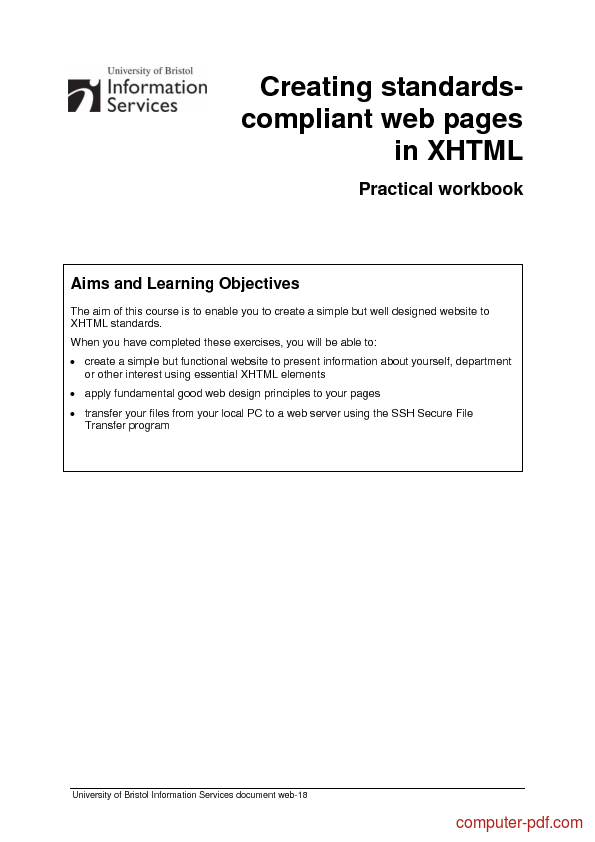

XHTML SAMPLE PAGE FULL
Instead, you would expand the disabled attribute to its full form, as shown below. Finally, HTML attributes cannot be used in their minimized form, which will also cause validation errors. This means HTML attributes such as the href attribute must be declared in a lowercase letter to avoid validation errors.
XHTML SAMPLE PAGE CODE
Some text The above code would throw validation errors due to the uppercase paragraph tag, this case sensitivity also applies to the HTML attributes. Furthermore, XHTML is case-sensitive, and using any uppercase letters will also cause validation errors. The above two lines would cause an error, the first because the closing tags are in the wrong order, the second because there is a missing closing tag. This is also true of empty elements like the image tag. Writing out the above code with the tags improperly nested or closed will cause validation errors. In XHTML, elements must always be properly nested and closed, as shown below: Some text The code above showcases these rules the code below will look at some of the other rules XHTML enforces.
XHTML SAMPLE PAGE HOW TO
The best way to learn how to properly understand XHTML is to learn the rules it enforces in that vein, the following code snippets will explore the rules.Īn XHTML document must have an XHTML declaration,, ,, and elements must also be present, and the xmlns attribute in must specify the xml namespace for the document. Next, let’s look at some examples of correct versus incorrect syntax of XHTML code and further explore how it differs from standard HTML. Furthermore, many of the industry standards are meant to increase security and performance.Įnforcing these standards creates a more consistent web experience for users across browsers for both the design and user experience. The value behind XHTML is evident when you consider the industry standards and requirements it enforces, which leads to better development practices. The above information is required in order to have an error-free page. The XHTML required to complete the above page would look something like the code below.

With XHTML, these syntax errors would throw errors and instead not correctly render pages or items.

Check out the next video to learn more about XHTML and HTML differences. However, most browsers will attempt to assume the necessary information to render the page and items correctly. This is not correct syntax and should cause an error. The code above is missing vital tags such as the doctype and a closing body tag. Let’s look at that first with an example of a basic webpage missing tags altogether. All modern browsers will try to fix broken HTML within limitations, such as closing an unclosed tag or assuming values for missing attributes. In HTML, the syntax for creating a basic page is less rigid, and incorrect HTML syntax will often be compensated for by the browser. Let’s look at an example of code that shows the difference between strictness and syntax between the two languages. There isn’t much difference in how they look and behave, other than the strict syntax. Let’s look at the comparison between XHTML and HTML. HTML5 has largely replaced XHTML and is often considered to be the superior choice. It's also worth considering that HTML should not be confused with HTML5 as they are different. XHTML works by allowing you to write standard HTML using the strict guidelines of the XML format. The primary goal of XHTML is to create a stricter way to develop websites consistently and expectantly. But it is also an extension of the XML language that is to say, it is more like a cross of the two languages. To understand XHTML, you inevitably need to understand HTML since it is an extension of that language. You will also see some code examples XHTML, showcasing both the correct and incorrect syntax.

Furthermore, you will discover the difference between standard HTML and XHTML, as well as the similarities. This post will cover the purpose and benefits of using XHTML.


 0 kommentar(er)
0 kommentar(er)
